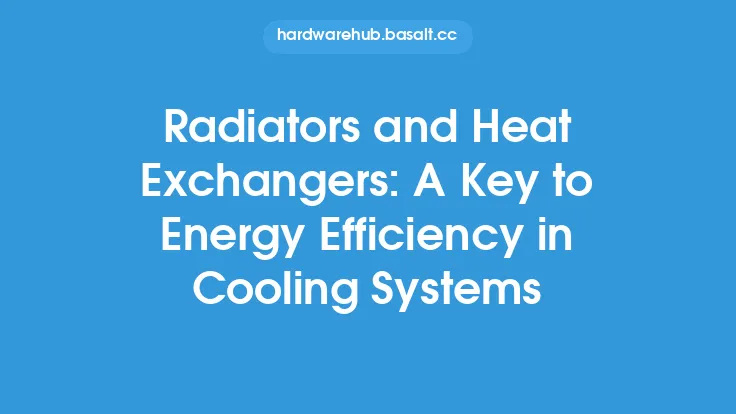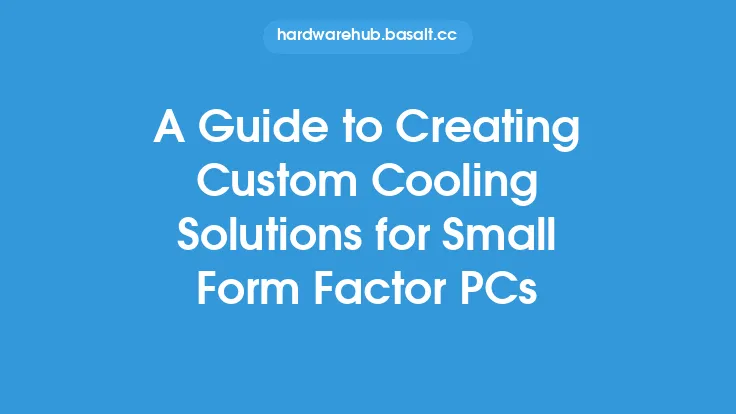Heat sinks are a crucial component in the thermal management of electronic devices, and their design plays a significant role in determining their cooling efficiency. One of the key factors that affect the performance of a heat sink is the design of its fins. In this article, we will delve into the world of heat sink fin designs, exploring the different types, their characteristics, and the factors that influence their cooling efficiency.
Introduction to Heat Sink Fin Designs
Heat sink fins are the protrusions that extend from the base of the heat sink, increasing its surface area and allowing it to dissipate heat more effectively. The design of these fins is critical, as it directly impacts the heat sink's ability to transfer heat from the source to the surrounding air. There are several types of fin designs, each with its own strengths and weaknesses. The most common types of fin designs include plate fins, pin fins, and elliptical fins. Plate fins are flat, rectangular protrusions that are often used in low-profile heat sinks. Pin fins, on the other hand, are cylindrical protrusions that are typically used in high-performance heat sinks. Elliptical fins are a combination of plate and pin fins, offering a compromise between the two.
Factors Influencing Fin Design
Several factors influence the design of heat sink fins, including the type of application, the available space, and the desired level of cooling performance. For example, in applications where space is limited, a heat sink with a compact fin design may be necessary. In contrast, applications that require high cooling performance may necessitate a heat sink with a more complex fin design. The material used to manufacture the heat sink also plays a role in determining the fin design. For instance, copper heat sinks often have more complex fin designs due to their high thermal conductivity, while aluminum heat sinks may have simpler fin designs due to their lower thermal conductivity.
Fin Geometry and Cooling Efficiency
The geometry of the fins is a critical factor in determining the cooling efficiency of a heat sink. The fin geometry includes parameters such as fin height, fin width, fin thickness, and fin pitch. Fin height and width determine the surface area of the fin, while fin thickness and pitch affect the flow of air through the fin array. A higher fin height and wider fin width can increase the surface area, leading to improved heat transfer. However, increasing the fin height and width can also increase the pressure drop, which can reduce the flow of air through the fin array. The optimal fin geometry is often a trade-off between these competing factors.
Fin Array Configuration
The configuration of the fin array is another important factor that affects the cooling efficiency of a heat sink. The fin array configuration includes parameters such as the number of fins, fin spacing, and fin orientation. Increasing the number of fins can increase the surface area, but it can also increase the pressure drop. The fin spacing and orientation can also impact the flow of air through the fin array. For example, a fin array with a high fin density can create a high-pressure drop, reducing the flow of air through the array. In contrast, a fin array with a low fin density can create a low-pressure drop, increasing the flow of air through the array.
Thermal Interface and Fin Design
The thermal interface between the heat source and the heat sink also plays a crucial role in determining the cooling efficiency of the heat sink. The thermal interface includes the thermal interface material (TIM) and the contact pressure between the heat source and the heat sink. A high-quality TIM can reduce the thermal resistance between the heat source and the heat sink, improving the cooling efficiency. The contact pressure between the heat source and the heat sink can also impact the thermal interface, with higher contact pressures often resulting in lower thermal resistances.
Optimization Techniques for Fin Design
Optimizing the fin design of a heat sink requires a combination of theoretical modeling, numerical simulation, and experimental testing. Theoretical modeling involves using mathematical equations to predict the thermal performance of the heat sink. Numerical simulation involves using computational fluid dynamics (CFD) and finite element methods (FEM) to simulate the thermal and fluid flow behavior of the heat sink. Experimental testing involves measuring the thermal performance of the heat sink under various operating conditions. By combining these techniques, designers can optimize the fin design of a heat sink to achieve maximum cooling efficiency.
Future Developments in Fin Design
The design of heat sink fins is continually evolving, with new technologies and materials being developed to improve cooling efficiency. One area of research is the development of nanostructured fins, which have been shown to enhance heat transfer coefficients. Another area of research is the development of 3D-printed fins, which can be designed to have complex geometries and structures that are not possible with traditional manufacturing techniques. As the demand for high-performance cooling systems continues to grow, the development of new fin designs and technologies will play a critical role in meeting this demand.
Conclusion
In conclusion, the design of heat sink fins is a critical factor in determining the cooling efficiency of a heat sink. The type of fin design, fin geometry, fin array configuration, thermal interface, and optimization techniques all play a role in determining the cooling performance of a heat sink. By understanding the factors that influence fin design and using optimization techniques, designers can create heat sinks with maximum cooling efficiency. As the field of heat sink design continues to evolve, new technologies and materials will be developed to improve cooling efficiency, enabling the creation of smaller, faster, and more powerful electronic devices.





